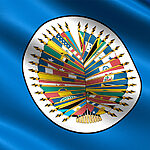Recognising and Addressing Workplace harassment – Part Two
Last month’s blog was part one on our harassment series, where we gave you an overview of the different types of workplace harassment and examined what staff members can do when they are considering filing a formal complaint. In this second part of the series, we will review the standard procedures for investigating harassment complaints and the due process rights of both the affected individual and the alleged offender.
Informal resolution mechanisms
Although most organisational policies always encourage informal resolution through discussions, seeking assistance from supervisors, the Ombudsperson or perhaps the Ethics Office, this is often entirely inappropriate for a genuine harassment complaint for obvious reasons.
However, if the staff member has sought legal advice before lodging a formal complaint and been advised that the conduct complained of is not likely to meet the legal definition of harassment, they should seriously consider informal resolution mechanisms as means to address and resolve what is undoubtedly problematic behaviour or is otherwise making them uncomfortable in the workplace. The sooner the conduct is addressed, the better for all parties involved.
Formal complaint of harassment
Depending on the organisation, formal complaints must be addressed to either the human resources manager, the head of the organisation or directly to the office of internal oversight.
The time limits for filing a formal harassment complaint vary greatly depending on the harassment policies in place in each international organisation and may range from 45 days from the date of the first incident (e.g. at UNOPS) to 6 months (for example, at ICC, WHO, UNICEF). Agencies that use the UN Staff Rules do not have any time limit for reporting harassment. However, staff are encouraged to report harassment cases as soon as possible after an incident occurs, as early reporting is critical to the success of any investigation and may significantly contribute to the organisation’s ability to address the allegations.
Delays in reporting affect the recollection of events, access to documentary evidence and availability of witnesses. It is easier to substantiate complaints and for the witnesses to provide credible, reliable accounts if misconduct is reported promptly rather than years after the event.
The complaint may be filed either by the alleged victim or by a third party. Although some organisations, such as UNDP, UNFPA or WFP, as well as the recent United Nations Secretary-General’s bulletin (ST/SGB/2019/8) allow for anonymous reporting of harassment incidents, this should generally be discouraged as it makes the matter more difficult to investigate and also to avoid receiving baseless, frivolous or malicious complaints.
The investigation
The investigation phase is the heart of any harassment case, as this is when investigators conduct a careful and detailed examination of all the circumstances surrounding the events at stake. The UN OIOS Investigations Manual is an effective practical resource for investigators on how to conduct an investigation, but it should be remembered that this serves as a guide only. The basic due process rights that should be provided to both the affected individual and the alleged offender are set out in other UN instruments and in case law.[1]
Due process entails conducting an objective investigation that collects both inculpatory and exculpatory evidence, informing the alleged offenders when a procedure has been initiated against them and notifying them of the charges, providing all parties with the material, evidence and details relied up on and granting the alleged offender reasonable time to defend themselves.[2]
A key element of any harassment investigation is witness interviews. Before the interview, investigators are required to notify the interviewee of their identity and function in conducting the interview, the rules of the investigation process and its possible consequences, the duty of all staff to cooperate with the investigation, and the interviewee’s obligation of confidentiality.
Confidentiality is a core value that must be preserved before, during and after the investigation phase. Harassment cases must be handled discreetly to avoid disclosure of information that would be expected to damage the dignity and reputation of any staff member.[3]
In terms of timing, the policies in force in international organisations normally set a time limit of approximately 6 months to complete an investigation and issue a report. However, based on the complexity of the cases, the difficulty of gathering and evaluating evidence, and the investigators’ workload, this phase can take much longer than the prescribed time.
Once the investigation has been completed, investigators prepare a report containing their findings. These findings are made based on the investigator’s assessment of which evidence is relevant and whether, on all of the evidence available, the alleged behaviour amounts to harassment. The applicable standard of proof varies in different organisations and also depends on the type of alleged misconduct and the disciplinary measures that would follow. In general, investigators look at whether there is “clear and convincing” evidence or a “preponderance of evidence”, which means that the truth of the allegations is highly probable.[4]
The report contains factual findings only and is supposed to make recommendations about disciplinary measures that should be imposed as a result – this falls to the final decision-maker.
What happens next?
The investigation report is generally submitted to the Director-General (DG) of the organisation to make a final decision. The DG can either accept or reject the findings in the report, but in either case, must provide “sufficiently clear, precise and intelligible reasons” for their decision.[5]
Based on the findings, there are three decisions that can be made:
- The alleged offender has in fact committed misconduct and should be subject to disciplinary sanctions;
- The alleged offender has not committed misconduct but should be subject to administrative or managerial action; or
- The alleged offender has not committed misconduct and the case should be closed.
Option 1 results in a disciplinary measure and gives rise to the disciplinary process. Many organisations provide for a different procedure to appeal disciplinary measures – the request for review stage is generally waived and affected staff members may appeal directly to either the UNDT or, in the case of organisations that refer to the ILOAT, to the internal appeal board.
Options 2 and 3 result in an administrative decision that can be challenged according to the usual appeal process.
What about the complainant?
Unlike civil proceedings in national jurisdictions, the person filing the harassment complaint has minimal rights and involvement after they have made the complaint. They will most likely be interviewed and asked to provide documentary evidence, but after that, they are effectively left out of the process and have no other role. Importantly, complainants/victims do not have any legal right to compensation or other remedies when making their complaint, as this is not covered in any staff rules, bulletins or directives.
If a finding of harassment or other misconduct is made, the organisation institutes disciplinary proceedings against the alleged offender. That process does not include the victim.
At the end of the disciplinary proceedings, i.e. when the DG issues a final decision, the complainant ordinarily has a right to be informed of that decision and to receive a copy of the investigation report. Organisations tend not to share a copy of the investigation report where the allegations were found to be manifestly groundless.[6]
In Option 1, the complainant will be told that their allegations were established and that disciplinary action is being taken but will not necessarily be told of the sanction imposed against the alleged offender. They will be advised of any other actions being taken to protect the complainant against retaliation or necessary working adjustment. The complainant does not have any basis or right to appeal this decision.
In Options 2 and 3, the complainant is generally advised that the allegations were not established, and so the complainant can challenge the decision to only take managerial action or to close the case using the administrative appeal process. However, the prospects of success for such an appeal will entirely depend on the specific facts of the case.
[1] See ST/AI/371 Revised disciplinary measures and procedures, ST/AI/2017/1 Unsatisfactory conduct, investigations and the disciplinary process, and ST/SGB/2017/2/Rev.1 Protection against retaliation for reporting misconduct and for cooperating with duly authorised audits and investigations.
[2] UNAT Judgment No. 442/2014, [28].
[3] ILOAT Judgment No. 2396/2005, at [4].
[4] See Section 2.3 of the OIOS Investigation Manual, citing UNAT Judgment No. 164/2011. In a harassment case, the “preponderance of evidence” means that the investigators are convinced that that there is a greater than 50% chance that the claim is true.
[5] ILOAT Judgment No. 4060/2021, [9].
[6] ILOAT Judgment No. 3365/2014, [21].










